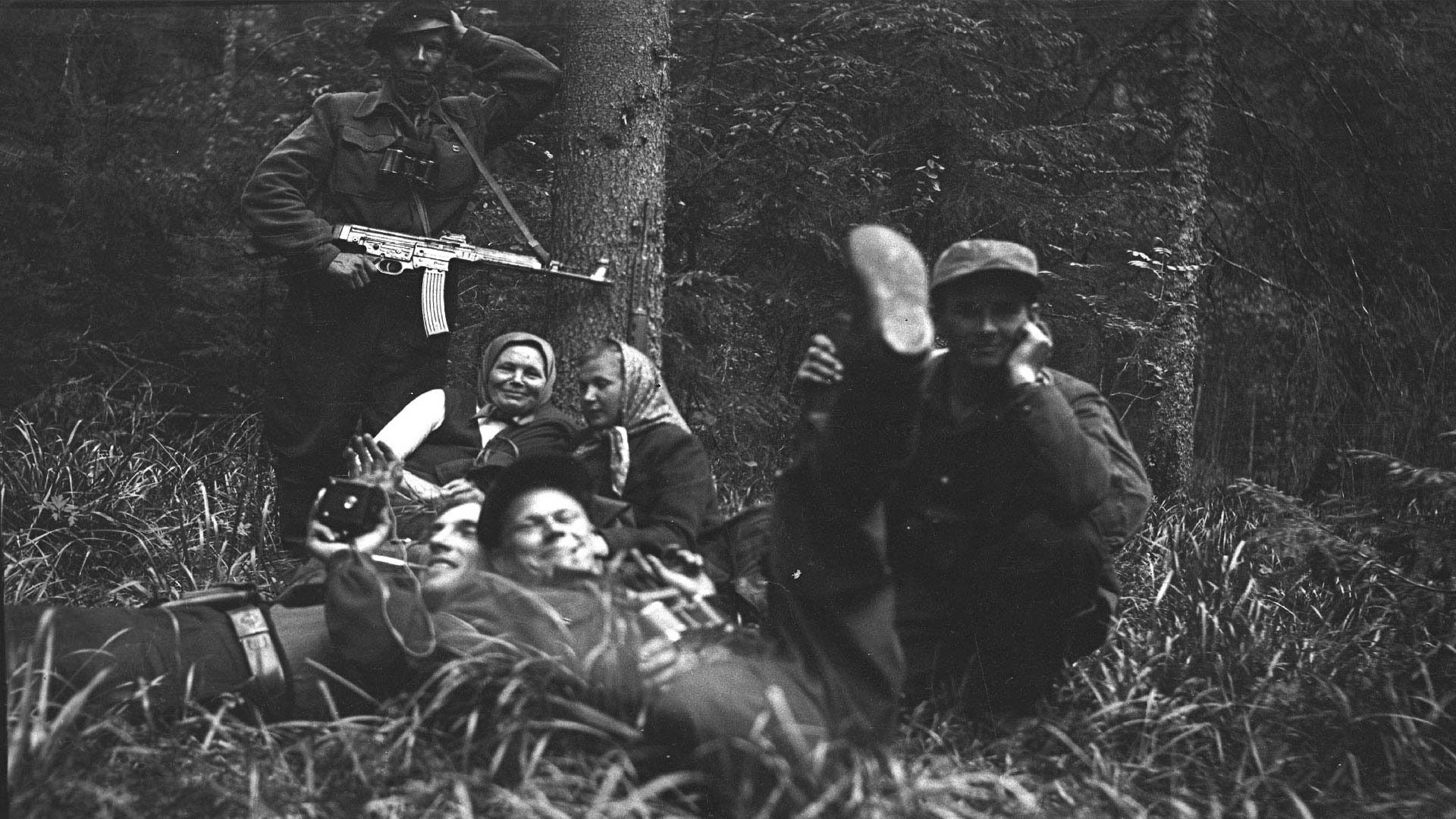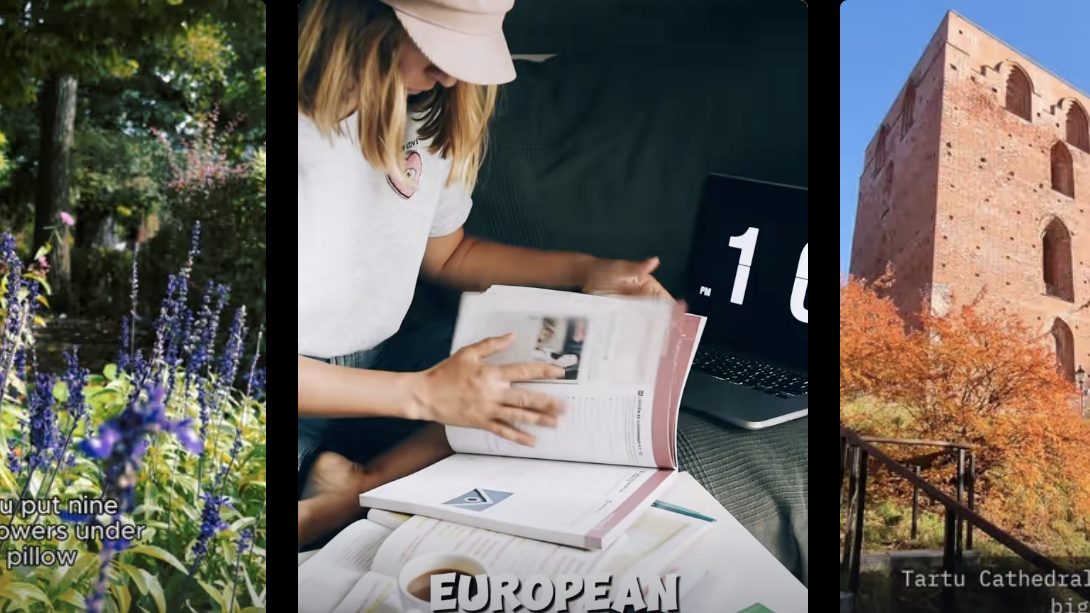Leelo Kingisepp and Marju Ilves share the story behind Keeleklikk — a unique online Estonian language course designed for anyone who wants to connect with Estonian language and heritage, no matter where they live.

For anyone visiting Estonia, speaking even a little bit of Estonian can enhance the experience, even though many Estonians also speak English well. Language is a special part of Estonian identity, and even a basic grasp of Estonian opens doors to a richer, more authentic connection with the culture and people. It’s no surprise — after long years under Soviet occupation and a recent journey to restoring independence — that keeping the Estonian language alive is key to preserving this small country’s unique identity.
“Having both studied and taught languages, I know how much a safe, welcoming environment can help create positive feelings about learning — and that’s exactly what Keeleklikk provides.”
Today, as language has become a sensitive political issue, learning Estonian is even more important for anyone planning to live in or connect with the country. Locals greatly appreciate when newcomers attempt to communicate in their language, as it reflects respect and a willingness to engage with the culture. However, Estonian is often seen as a challenging language for people from other countries, so having positive associations with it is crucial. It’s important to find supportive and enjoyable ways to connect with the language. Having both studied and taught languages, I know how much a safe, welcoming environment can help create positive feelings about learning — and that’s exactly what Keeleklikk provides. This fantastic, free online platform makes learning Estonian accessible and enjoyable for anyone, anywhere, no matter their location or residency status in Estonia.
I began my journey of learning Estonian on this platform, and it gave me hope that I could actually learn the language, despite the stress I was experiencing from the war and the challenges of emigration. Every time I opened a new lesson, listening to the dialogues and watching the videos, it felt like I was coming home to a peaceful time before Russia’s invasion of Ukraine and even before the pandemic — back when I was a student and later a teacher, enjoying the cherished spirit of academic romance and linguistic delight. This online platform offered me a sense of friendliness and safety — a kind of virtual home.
Beyond that, I was genuinely impressed by its quality and thoughtful design. Keeleklikk allows you to learn at your own pace, with tasks that make the process both engaging and enjoyable. The exercises have a playful tone, and there’s plenty of humour woven into the dialogues and video explanations of grammar rules. The voices of the cartoon characters are vibrant and lively, adding a light-hearted touch, and the videos are carefully crafted with impressive attention to detail. I found myself smiling at every joke, and the voices of the actors became so familiar to me, as if the actors themselves were my old friends. They reminded me of my visits to the theatre back home. I was glad to be learning the language in this atmosphere of creative performance, with a hint of a carnival-esque atmosphere.
Though an online course doesn’t offer the interactive environment of in-person classes, Keeleklikk has a unique feature: it encourages students to write letters as part of their assignments, which are then responded to by a real teacher — this helps learners feel more connected to the language.
For popular languages like English, German, and French, teaching methods have been refined over decades, even centuries. That’s why it’s especially impressive that this course for a language as unique as Estonian is developed to such a high professional standard. No wonder Keeleklikk won an award for the best language development project in Estonia shortly after it was launched in 2014!
I decided to contact the creators of the course — Leelo Kingisepp and Marju Ilves — to learn more about how it was designed and developed. Both are experienced teachers and educational methodologists who have created numerous learning materials for studying Estonian. Here is my conversation with the two professionals who have made an enormous contribution to the promotion of the Estonian language at home and abroad, and thus have brought a share of joy and peace to a world torn apart by conflicts.
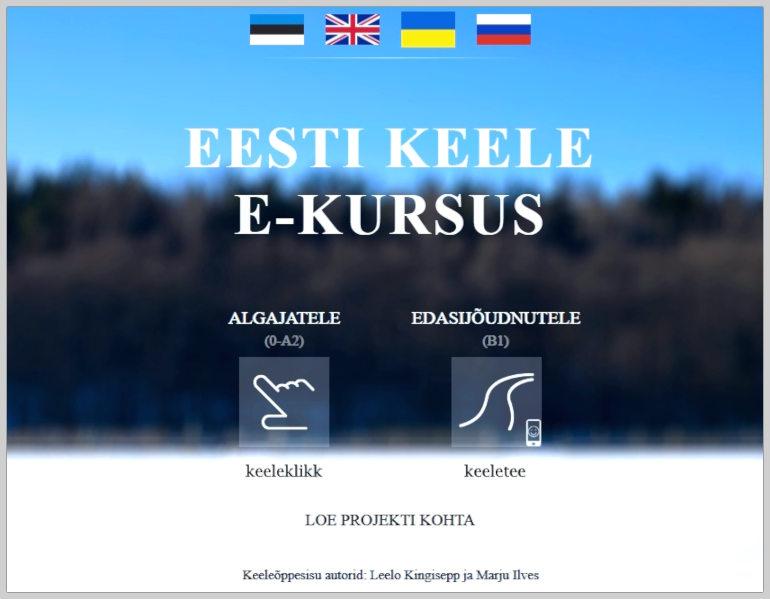
Could you tell us about your education and professional activities?
Leelo Kingisepp: I completed my Master’s degree in the Estonian language and literature at the University of Tartu, and after that I studied foreign language methodology at the University of New Brunswick, Canada, for one year. I also studied psychodrama and became a group therapist. I am currently running a small publishing house, developing study materials for second language learning. In addition to this, I teach Estonian as a foreign language and do teacher training.
Marju Ilves: I am also an alumnus of the University of Tartu; my specialty was Estonian and Hungarian linguistics. Currently I am an English teacher in a small Estonian school. I teach Estonian as a second language to adults online and I train teachers in the teacher training program Noored Kooli. I also develop educational materials with Leelo.
“I wanted to create study materials for teaching Estonian as a second language that would be on the same level as world class second language materials.”
(Leelo Kingisepp)
How did it happen that you started developing language courses?
Leelo: For me the driving power was pure envy! The textbooks of English as a second language were so much better than the textbooks of Estonian as a second language. Everything was better – starting with the printing quality, layout, illustrations, all the way to the teaching methodology. I wanted to create study materials for teaching Estonian as a second language that would be on the same level as world class second language materials.
Marju: I think the trigger for me was the lack of study materials. My teaching career began with teaching Estonian to Hungarians at a university in Hungary, and I had great support from an excellent Estonian language textbook prepared for Hungarians. When I returned to Estonia a few years later and started teaching at Tallinn University, I could not find teaching materials of the same quality.

How many language courses and textbooks have you created?
Leelo: Marju and I have written several sources of study material, including the language content for the e-courses “Keeleklikk” and “Keeletee”, a manual and lesson plans for language [cafés], and the methodology and study materials for the Settle in Estonia program. Our latest book Mustmiljon küsimust algajale keeleõppijale (A Zillion Questions for Language Learners) contains conversation questions and reading texts for beginners.
Marju: The first study material I created was a Hungarian-Estonian picture dictionary, in collaboration with my colleague Marta Csire.
Leelo: I have also written, with Mare Kitsnik, an Estonian textbook for beginners titled Complete Estonian (2008) and a few textbooks for higher language levels too. The latest one is a two-volume textbook titled Naljaga pooleks for the B1-level.
Why and how did you decide to create Keeleklikk? Who is the target audience of your course?
Leelo: “Keeleklikk” was an initiative of one man – Asko Uri – who was studying social work at the University of Tartu. He had the idea that there should be better language learning opportunities for unemployed Russian-speaking residents of Estonia. So, he assembled a team to apply for funds from the European Social Fund. That’s how Keeleklikk started, and initially when the course first became operational in 2012, it was in Russian only.
Marju: As Keeleklikk was a great success from the very beginning and attracted lots of learners (almost 2,000 learners registered on the first day we opened the course!), our Ministry of Education provided further funds to translate it into English and to create a platform for smartphones (previously Keeleklikk worked only on computers). Today we also have a Ukrainian version. Keeleklikk is for language levels 0-A2, and currently we have over 56,000 active users. In 2017, the Ministry of Education ordered the B1 level course called Keeletee.
“We have met learners who studied only with “Keeleklikk” outside of Estonia and were conversing freely in the language.”
(Marju Ilves)
What opportunities does the certificate received by the students after completing the course A1 give?
Leelo: It is meant for self-study, so the certificate one receives at the completion of the course has a symbolic value only.
Marju: In Estonia in order to prove your language qualifications you need to take the State Language exam. Nevertheless, Keeleklikk provides language content in the form of cartoons and grammar videos. It has over 1,700 exercises and teacher support (learners can send written exercises to a real teacher of Estonian who corrects the mistakes and answers the letters). And the learner who follows the course should be able to gain quite a good language level. We have met learners who studied only with “Keeleklikk” outside of Estonia and were conversing freely in the language.
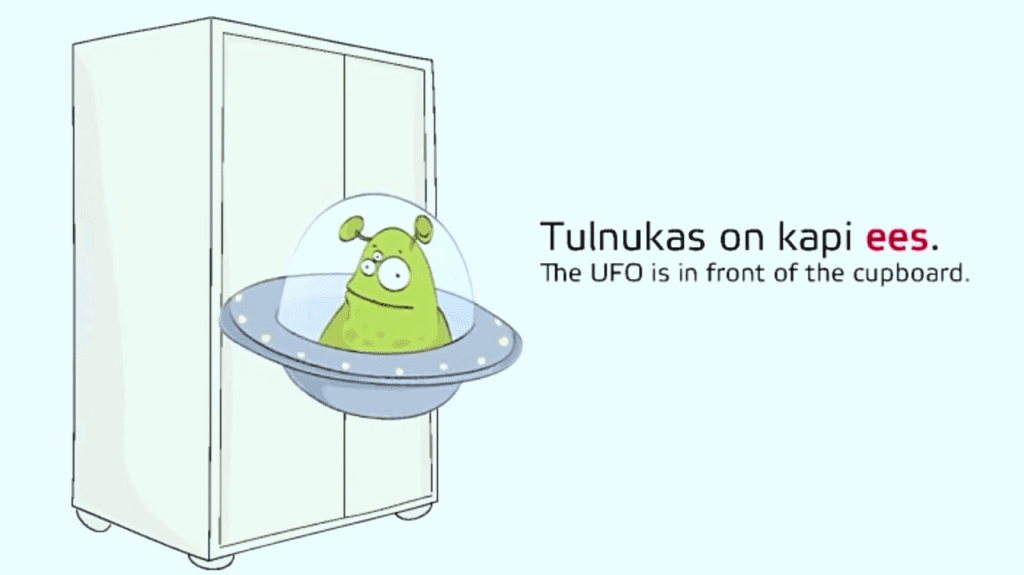
What was the process of developing this course? How did you find the actors to play the roles? Who created those wonderful jokes?
Leelo: The process began back in 2010 with fundraising and writing up the methodological concept of the language course. The initial ideas were that the e-course should suit people with limited computer skills and that the language learning should be interesting and fun. Estonian grammar has the reputation of being difficult, so we wanted to prove the opposite. Motivation for self-study tends to be hard, so we wanted our e-course to be as self-explanatory as possible and so charming that people would rather spend their time learning Estonian instead of watching other things on YouTube. We had over 40 people working on this course in different roles, as the material is so diverse. Marju and I wrote the dialogue for the cartoons and we had an artist, Triin Kuusik, who created the visuals. A team of animators then made the cartoons.
Marju: The scripts of grammar videos were written by Leelo. Urve Eslas, who is a multitalented journalist, helped with creating the jokes and writing the screenplays for the grammar videos. We needed a bilingual actor who could speak both Estonian and Russian flawlessly. We were lucky to find Inga Salurand. Later on, she also did the grammar videos in English. The filming was done with one camera only, by Taaniel Raudsepp, and compiled later by a team of animators. We had a group of programmers creating the engine and the exercises of the e-course. We also had five actors from a theatre in Viljandi who gave their voice to the exercises. The chapters were made available to the learners one by one, and the whole Keeleklikk course was completed in 2014.
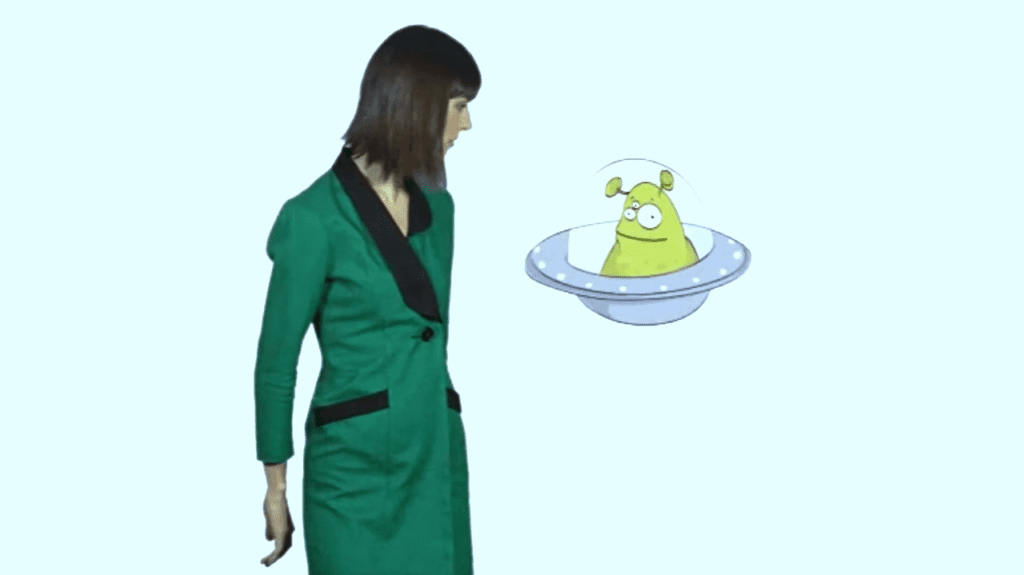
What were the main principles that guided you when developing this course?
Leelo: The main principles were that in order to learn a new language one has to see and hear it (thus we created cartoons with suitable language content), learn about the structure of the language (we created grammar videos to cover that), and then practise what one has learnt in various contexts (we have hundreds of exercises that help to do that).
Another principle is that there should be just one question at a time to answer, so the exercises are divided into smaller bits. If you count all the single clicks that you need to make while learning with the Keeleklikk course, you get to 10,000 clicks.
What are the advantages of the Keelekikk course?
Marju: Keeleklikk is a unique language learning course that has no analogue anywhere in the world. It can also be a useful additional tool for any Estonian language course conducted in classroom. Students can study grammar topics further and do exercises at home at their own speed. Both Keeleklikk and Keeletee feature a section for Estonian teachers where they can find all the dialogue texts, a list of exercises, and grammar topics.
Leelo: The e-courses Keeleklikk and Keeletee are free of charge, so everyone has a possibility to become a speaker of Estonian.
What countries do your students come from and why do they want to study the Estonian language?
Leelo: We can’t tell exactly which countries the learners of Keeleklikk come from as their personal data is confidential. Still, as both Marju and I also answer the letters learners send in through “Write to the Teacher” exercises, we do know they come from all over the world. But we don’t know their motives for learning Estonian.
Have you received any feedback?
Marju: Yes, the feedback has been very positive. After completing the course, one student wrote:
“Many thanks to all the creators of the Estonian language course Keeleklikk! It’s so interesting! It’s so simple! It’s so understandable! All my fears disappeared, and I became so passionate about learning Estonian. I want more and more! I was able to recall and use what I had learned in order to move forward! Most importantly, it really encouraged my desire to continue language studies! I recommend this course to all my friends!” Tatiana

What are your plans for the future? Are you going to develop more courses or textbooks?
Leelo: The Estonian Ministry of Education is organizing a tender to develop an e-course for the B2 language level.
“I believe you have to start to use the language you are learning. Testing it out is the key to success.”
(Leelo Kingisepp)
What would you say to those who are thinking of starting to learn Estonian but have some doubts?
Marju: Estonian is a cool language as it belongs to the Finno-Ugric group of languages and is very different from other languages spoken in Europe. Estonians appreciate when foreigners try to learn their language.
What’s the key to success in language learning?
Leelo: We first have to define what success is. I personally think you are already a successful language learner if you can order a coffee in a foreign language and do actually get coffee, not Coca-Cola, for instance. I believe you have to start to use the language you are learning. Testing it out is the key to success.
Marju: I completely agree! And you have to keep working at it to get better.
Jerry Mercury, Tallinn, November 2024
